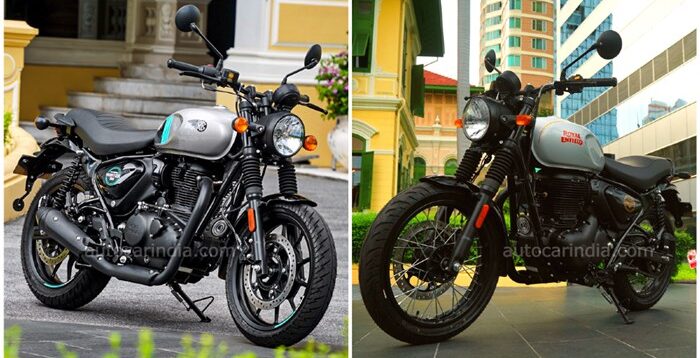The Royal Enfield Hunter 350 has finally arrived in India. The Royal Enfield Hunter 350 is available in two variants, Retro and Metro, and is priced at 1.50 lakh and 1.64 lakh (ex-showroom). The Metro variant is available in two trim levels: Dapper and Rebel, with prices starting at Rs.1.64 lakh and Rs.1.68 lakh (ex-showroom).
The Royal Enfield Hunter 350 shares many components with its siblings, the Classic 350 and the Meteor 350. The 349cc single-cylinder twin-valve engine, for example, is shared with other siblings. This engine produces 20.2 hp at 6,100 rpm and 27 Nm of maximum torque at 4,000 rpm in the Hunter 350, as it does in the Meteor and Classic 350. Royal Enfield, on the other hand, claims that fuel and ignition maps have been tweaked on the Hunter.
While the motorcycle has distinct elements when compared to its siblings, the two variants, Retro and Metro, are also distinct in terms of various elements and features. Here are the variants explained in terms of their differences.
Royal Enfield Hunter 350 Retro vs Metro:
Instrument cluster- The distinctive instrument clusters in both variants are the first thing that stands out. The Metro has a stylish instrument cluster with a larger digital display, similar to the Meteor and Scram. The Retro, on the other hand, receives a simple speedometer console with a smaller digital display.
Taillight and grab rail- The taillights are also different in each variant. The Metro has an LED taillight and round indicators, whereas the Retro has a traditional halogen taillight and rectangular indicators. The Metro has a sleek and stylish rear grab rail, whereas the Retro has a basic tubular grab rail.
Wheels and tyres- Both the Metro and Retro models ride on the same 17-inch wheels. However, there are differences in terms of styling and tyres wrapped around them. The Retro has wire-spoke wheels, whereas the Metro has alloy wheels. The Retro has front and rear tubed tyres measuring 110/80-17 and 120/80-17, respectively. The Metro, on the other hand, gets larger tyres, with a front diameter of 110/70-17 and a rear diameter of 140/70-17.
Brake and ABS– The Retro has a front disc and rear drum brake, as well as a single channel ABS, while the Metro has front and rear disc brakes. Aside from the 270 mm rear disc brake, the Metro has a dual channel ABS system.
Source:ASTech







 Finance
Finance







